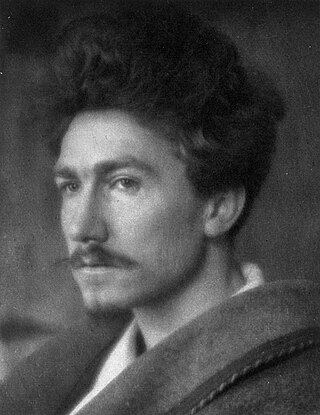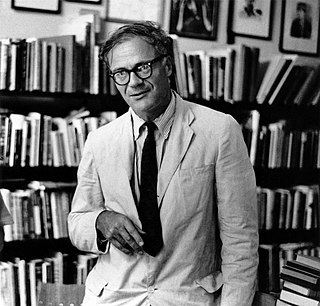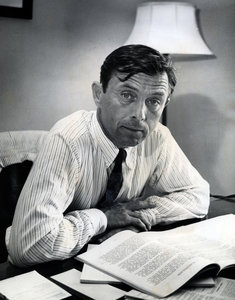This article needs additional citations for verification .(April 2015) |

Spring and All is a volume of poems by William Carlos Williams, first published in 1923 by Robert McAlmon's Contact Publishing Co.
This article needs additional citations for verification .(April 2015) |

Spring and All is a volume of poems by William Carlos Williams, first published in 1923 by Robert McAlmon's Contact Publishing Co.
Spring and All is a hybrid work consisting of alternating sections of prose and free verse. It might best be understood as a manifesto of the imagination. The prose passages are a dramatic, energetic and often cryptic series of statements about the ways in which language can be renewed in such a way that it does not describe the world but recreates it. These passages are interspersed with poems that demonstrate this recreation in both their form and content. The two most famous sections of Spring and All are poems I and XXII. The former, which opens "By the road to the contagious hospital", is commonly known by the title "Spring and All", and the latter is generally known as "The Red Wheelbarrow".
Spring and All was printed in an edition of 300 by Maurice Darantière. Darantière was a printer based in Dijon, France, who had printed the first edition of James Joyce's Ulysses in 1922, and who also printed a range of other significant modernist works. Williams himself said the book drew little attention at the time of publication. Williams biographer Paul Mariani notes: "...most of the copies that were sent to America were simply confiscated by American customs officials as foreign stuff and therefore probably salacious and destructive of American morals. In effect, Spring and All all but disappeared as a cohesive text until its republication nearly ten years after Williams’ death." [1] Some sources indicate that half of the original print run was confiscated by the U.S. Post Office. [2]
Until July 2011, when New Directions Publishing issued a facsimile edition, it was never again published as a free-standing book, though the poems and some of the prose sections were reprinted in various combinations through the years. In 1970, Spring and All appeared in its entirety, along with several other short works, in New Directions volume Imaginations, which is still in print. Spring and All is also included in the first volume of Williams's Collected Poems.
According to Williams biographer James E. Breslin, T. S. Eliot's poem The Waste Land which appeared in 1922, was a major influence on Williams and Spring and All. [3] In The Autobiography , Williams would later write, "I felt at once that The Waste Land had set me back twenty years and I'm sure it did. Critically, Eliot returned us to the classroom just at the moment when I felt we were on a point to escape to matters much closer to the essence of a new art form itself—rooted in the locality which should give it fruit". [4] Spring and All viewed the same post-World War I landscape as did Eliot but interpreted it differently. Williams "saw his poetic task was to affirm the self-reliant, sympathetic consciousness of Whitman in a broken industrialized world", Williams critic Donald A. Stauffer noted. "But unlike Eliot, who responded negatively to the harsh realities of this world, Williams saw his task as breaking through restrictions and generating new growth."
Spring and All was cited as one of the 88 "Books That Shaped America" by the Library of Congress in 2012. [5] In its statement on the impact of the work, The Library of Congress notes: "A practicing physician for more than 40 years, William Carlos Williams became an experimenter, innovator and revolutionary figure in American poetry. In reaction against the rigid, rhyming format of 19th-century poets, Williams, his friend Ezra Pound and other early-20th-century poets formed the core of what became known as the 'Imagist' movement. Their poetry focused on verbal pictures and moments of revealed truth, rather than a structure of consecutive events or thoughts and was expressed in free verse rather than rhyme."
Free verse is an open form of poetry, which in its modern form arose through the French vers libre form. It does not use consistent meter patterns, rhyme, or any musical pattern. It thus tends to follow the rhythm of natural speech.

Poetry, also called verse, is a form of literature that uses aesthetic and often rhythmic qualities of language − such as phonaesthetics, sound symbolism, and metre − to evoke meanings in addition to, or in place of, a prosaic ostensible meaning. A poem is a literary composition, written by a poet, using this principle.

Thomas Stearns Eliot was a poet, essayist, publisher, playwright, literary critic and editor. Considered one of the 20th century's major poets, he is a central figure in English-language Modernist poetry. Through his trials in language, writing style, and verse structure, he reinvigorated English poetry. He also dismantled outdated beliefs and established new ones through a collection of critical essays.

William Carlos Williams was an American poet, writer, and physician closely associated with modernism and imagism.
Prose is a form of written or spoken language that follows the natural flow of speech, uses a language's ordinary grammatical structures, or follows the conventions of formal academic writing. It differs from most traditional poetry, where the form consists of verse based on rhythmic metre or rhyme. The word "prose" first appears in English in the 14th century. It is derived from the Old French prose, which in turn originates in the Latin expression prosa oratio.

Wallace Stevens was an American modernist poet. He was born in Reading, Pennsylvania, educated at Harvard and then New York Law School, and spent most of his life working as an executive for an insurance company in Hartford, Connecticut. He won the Pulitzer Prize for Poetry for his Collected Poems in 1955.

Imagism was a movement in early-20th-century Anglo-American poetry that favored precision of imagery and clear, sharp language. It is considered to be the first organized modernist literary movement in the English language. Imagism is sometimes viewed as "a succession of creative moments" rather than a continuous or sustained period of development. The French academic René Taupin remarked that "it is more accurate to consider Imagism not as a doctrine, nor even as a poetic school, but as the association of a few poets who were for a certain time in agreement on a small number of important principles".

Dame Helen Louise Gardner, was an English literary critic and academic. Gardner began her teaching career at the University of Birmingham, and from 1966 to 1975 was a Merton Professor of English Literature, the first woman to have that position. She was best known for her work on the poets John Donne and T. S. Eliot, but also published on John Milton and William Shakespeare. She published over a dozen books, and received multiple honours.
Modernist poetry in English started in the early years of the 20th century with the appearance of the Imagists. In common with many other modernists, these poets wrote in reaction to the perceived excesses of Victorian poetry, with its emphasis on traditional formalism and ornate diction. In many respects, their criticism echoes what William Wordsworth wrote in Preface to Lyrical Ballads to instigate the Romantic movement in British poetry over a century earlier, criticising the gauche and pompous school which then pervaded, and seeking to bring poetry to the layman.

Robert Traill Spence Lowell IV was an American poet. He was born into a Boston Brahmin family that could trace its origins back to the Mayflower. His family, past and present, were important subjects in his poetry. Growing up in Boston also informed his poems, which were frequently set in Boston and the New England region. The literary scholar Paula Hayes believes that Lowell mythologized New England, particularly in his early work.
The Objectivist poets were a loose-knit group of second-generation Modernists who emerged in the 1930s. They were mainly American and were influenced by, among others, Ezra Pound and William Carlos Williams. The basic tenets of objectivist poetics as defined by Louis Zukofsky were to treat the poem as an object, and to emphasize sincerity, intelligence, and the poet's ability to look clearly at the world. While the name of the group is similar to Ayn Rand's school of philosophy, the two movements are not affiliated.

Harold Hart Crane was an American poet. Provoked and inspired by T. S. Eliot, Crane wrote modernist poetry that was difficult, highly stylized, and ambitious in its scope. In his most ambitious work, The Bridge, Crane sought to write an epic poem, in the vein of The Waste Land, that expressed a more optimistic view of modern, urban culture than the one that he found in Eliot's work. In the years following his suicide at the age of 32, Crane has been hailed by playwrights, poets, and literary critics alike, as being one of the most influential poets of his generation.
Paterson is an epic poem by American poet William Carlos Williams published, in five volumes, from 1946 to 1958. The origin of the poem was an eighty-five line long poem written in 1926, after Williams had read and been influenced by James Joyce's novel Ulysses. As he continued writing lyric poetry, Williams spent increasing amounts of time on Paterson, honing his approach to it both in terms of style and structure. While The Cantos of Ezra Pound and The Bridge by Hart Crane could be considered partial models, Williams was intent on a documentary method that differed from both these works, one that would mirror "the resemblance between the mind of modern man and the city."
"The Red Wheelbarrow" is a poem by modernist poet and physician William Carlos Williams (1883–1963). The poem was originally published without a title and was designated as "Betty White" as the twenty-second work in Williams' 1924 book Spring and All, a hybrid collection which incorporated alternating selections of free verse poetry and prose. It is one of Williams' most frequently anthologized poems, and is considered a prime example of twentieth-century Imagism.

James Laughlin was an American poet and literary book publisher who founded New Directions Publishing.

"When Lilacs Last in the Dooryard Bloom'd" is a long poem written by American poet Walt Whitman (1819–1892) as an elegy to President Abraham Lincoln. It was written in the summer of 1865 during a period of profound national mourning in the aftermath of the president's assassination on 14 April of that year.

Edward Reed Whittemore, Jr. was an American poet, biographer, critic, literary journalist and college professor. He was appointed the sixteenth and later the twenty-eighth Poet Laureate Consultant in Poetry to the Library of Congress in 1964, and in 1984.
— Opening lines from The Waste Land by T. S. Eliot, first published this year
Paul Mariani is an American poet and is University Professor Emeritus at Boston College.